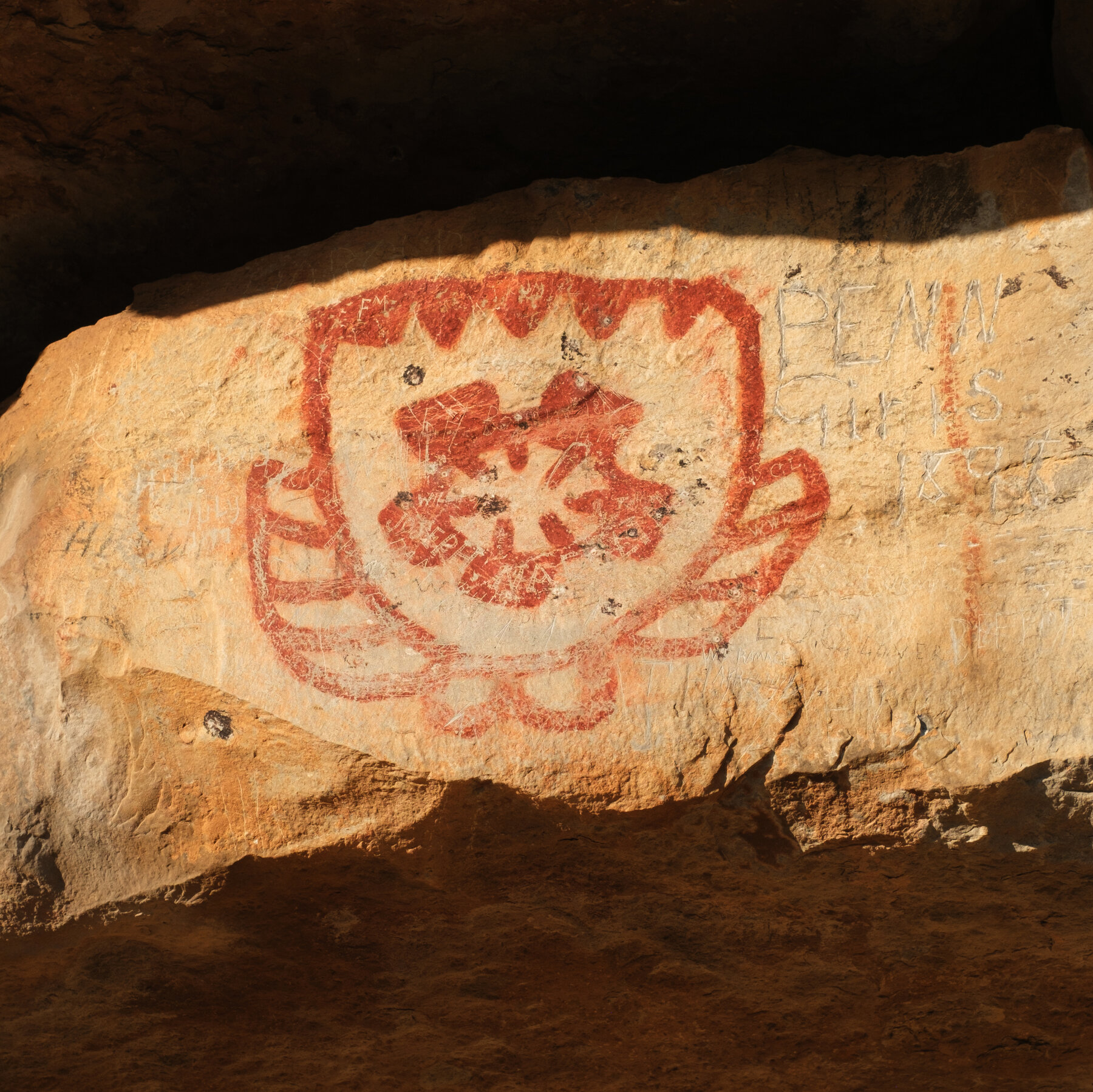Paint Rock: Centuries of Native American Artistry
NEW YORK, NY.- Paint Rock, a historic ceremonial site in Central Texas, serves as an outdoor gallery showcasing rock art that captures centuries of Native American heritage. Spanning half a mile atop a 70-foot bluff above the Concho River, Paint Rock is named for its pictographs etched into limestone shelves. Nomadic tribes used massive flat-faced boulders as canvases to paint and carve over 1,500 images, including tomahawks, winged serpents, a Spanish mission, and a turtle. Remarkably, on the winter solstice, a beam of light strikes the turtle’s back at solar noon.
In March, numerous people from the region, predominantly Coahuiltecan, Comanche, and Lipan Apache, gathered with researchers for a four-day excavation at Paint Rock. Mary Motah Weahkee, a retired archaeologist and member of the Comanche Nation and Santa Clara Pueblo tribes, participated to inspire Comanche youth and elders to connect with their history through prayers, songs, and sleeping at the site. She also performed a rain-dance ritual, which she humorously noted caused a flood in a nearby town.
Scholars believe that Native groups occupied the bluffs in two main periods: during the Late Archaic (circa 600 B.C. to A.D. 200) and the Late Prehistoric (800 to 1700). Up to 300 tribes camped at Paint Rock, with the last Comanches leaving in 1865 due to encroaching settlers.
In 1856, Gen. Robert E. Lee and his troops camped at Paint Rock’s western springs. Eric Schroeder, editor of the Bulletin of the Texas Archeological Society, noted that fragments of Lee’s dinnerware were found during a previous archaeological investigation in the 1990s. Though there are no pictographs related to Lee’s visit, notable cavalry soldiers and land surveyors left autographs on the cliffs, sometimes overlapping existing paintings.
The bluffs were a favored stop for stagecoaches on the Butterfield Overland Mail route (1858-1861) and later the Goodnight-Loving trail, a cattle drive route featured in Larry McMurtry’s novel “Lonesome Dove.”
The Jumano tribe, known for trading and bison hunting from 1300 to 1600, is credited with creating many of the glyphs. Their palette included red from bear, bison, or beaver fat mixed with pulverized hematite, yellow from geodes or ocher, white from chalk, and black from shale and charcoal. One artist possibly introduced spatter painting to North America by blowing pigment around hand outlines using hollow reeds.
For over 50 years, Kay Campbell, who passed away in April at 96, managed the 2,500-acre sheep ranch encompassing Paint Rock. Her grandfather, D.E. Sims, began acquiring the land in 1877 to protect the site. Campbell opened the site to the public and conducted guided tours, a tradition her son Bill Campbell continues.
To enrich the frontier stories associated with the pictographs, Jeremy Elliott, an English professor at Abilene Christian University and excavation organizer, encouraged tribal elders to share these tales with their grandchildren. One elder explained that a depiction of a grasshopper, scorching sun, and corn stalks represented a harvest ruined by insects and heat.
Some illustrations were more macabre, such as a stick man with an arrow through his head, interpreted as a sign of insanity, and another of scalps, crossed spears, and a prone hoop-skirted figure, believed to depict Alice Todd’s abduction by a Comanche war party in the mid-1860s.
During the March excavation, artifacts like pottery and remnants of household hearths were found. On the last day, a tribe member remarked on the need to give back to the land. In response, elders held a purification ceremony, offering cornmeal, beef jerky, and tobacco to honor their ancestors.



Comments (0)